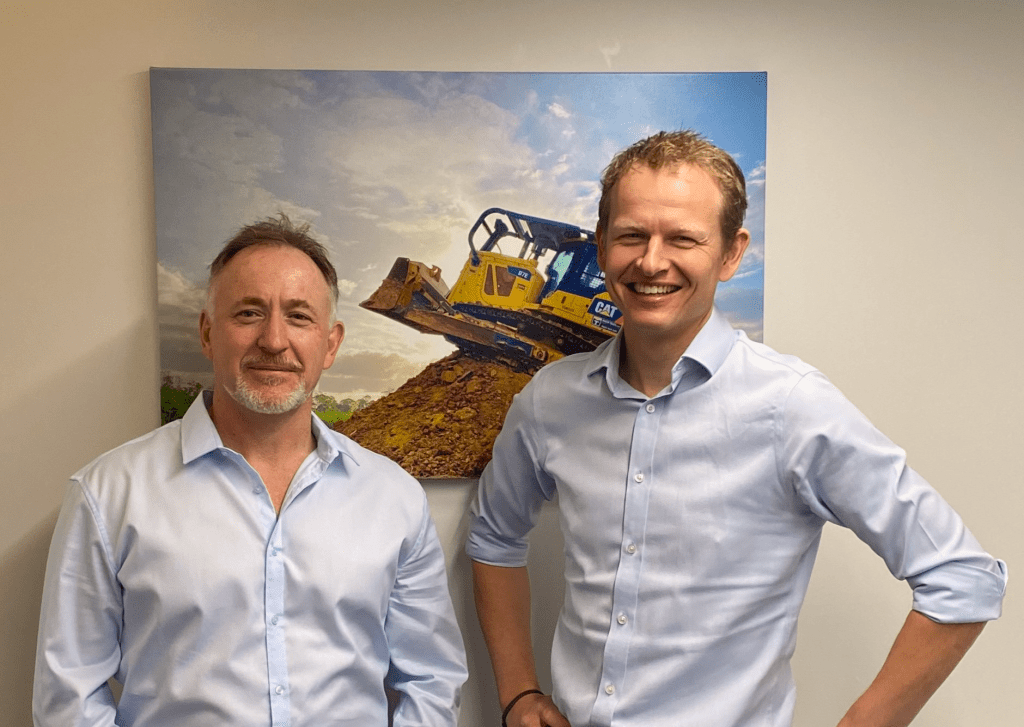This company gives a real-time view of asset value to bring better understanding to bosses, shareholders, lenders and insurers.

Heavy machinery assets can be more challenging for a business to value than your average car or truck, making it difficult for traders, analysts, brokers, shareholders, insurers, lenders and company executives to know the bottom line.
CoaXion is disrupting how to manage heavy assets in farming, construction and mining industries and is looking to expand further into the US with its next round of funding, which is likely to be between US$7 million and US$11 million.
“You need to be able to contemplate the actual usage and operation of the asset to really have a good understanding of the value at any point in time,” says coaXion CEO Colin Armbruster.
“Our vision is to unlock the value opportunities in trillions of dollars worth of assets out there, where we can reveal in real time what the value is at any point in time, which really then allows those different sorts of value streams within the segments that we’re serving.”
He says, “it’s disrupting the ability to manage an asset from a financial perspective from purchase all the way through to disposal”.
This allows for a better real-time understanding of the company’s balance sheet. Rather than trying to make financial decisions about the asset’s tax depreciation schedule, which is a straight line, or potentially instead of having to pay 1000s of dollars to third-party experts to come and do a field valuation, coaXion can provide a much higher accuracy estimate of the value of the asset or the fleet in real-time based on how it’s been operating.
There are essentially three different types of customers that can use the tracking information; the owner-operator, lenders and insurance companies.
With a better understanding of the asset’s value, owner-operators can determine how much life is left in the machinery and lenders, and insurers have a better idea of what it is worth to judge financing, repayments and premiums better. It helps with the risk management of the portfolio.
It brings cost-effectiveness and management efficiencies and squeezes the most out of the asset with the greatest amount of oversight.
“We spent the last year essentially doing some lending ourselves because we needed some, let’s call them, sandbox customers to help us better understand the value proposition and the technology. So we did that for the last year. And now, from a scalability perspective, we’re moving away from being a lender ourselves because that’s not scalable,” says Armbruster in an interview with Forbes Australia.
The company is now focused on driving SaaS revenues by delivering the technology solution to lenders, insurers and rental companies to capture market share in the Heavy Mobile Equipment (HME) sectors in Australia, worth around $20 billion, and in the US, where it’s around US$250 billion in market value. There’ll be a move into the US market this year.
To date, coaXion has raised $3.2 million, with a current pre-Series A raise underway. The seed round targeted $1.5 million and raised $2.65 million. Investors include angels, family offices, about $550,000 from the founders, a high-net-worth investment fund, and an industry-related fund.
“Our technology has some hardware that goes on the asset, and it basically then measures the, let’s call it, the whole body motion or vibration of the asset. It turns that into a degradation model, which drives the valuation. But there are tens of millions of assets in those classes sitting out there in the world at the moment, and there’s an additional three million new assets sold yearly with about 40 brands selling globally,” Armbruster says.
“We’re developing something purpose-built around the financial health of the asset. We are working with some of those brands because they offer to lend. For example, in the US, the second-largest financier is John Deere. They do a ton of asset finance on their gear, so the value proposition is there for them.”
“I spent 18 years in the US, and I’m really aware of the market opportunity, so that’s why I’m so keen to get into the US. The US is a much more complex market from a lending and asset perspective. It also drives more competition and willingness to adopt new technologies and ideas. We know we’ll find people that want to disrupt the industry who will adopt the technology, and we’re already finding that here in Australia.”